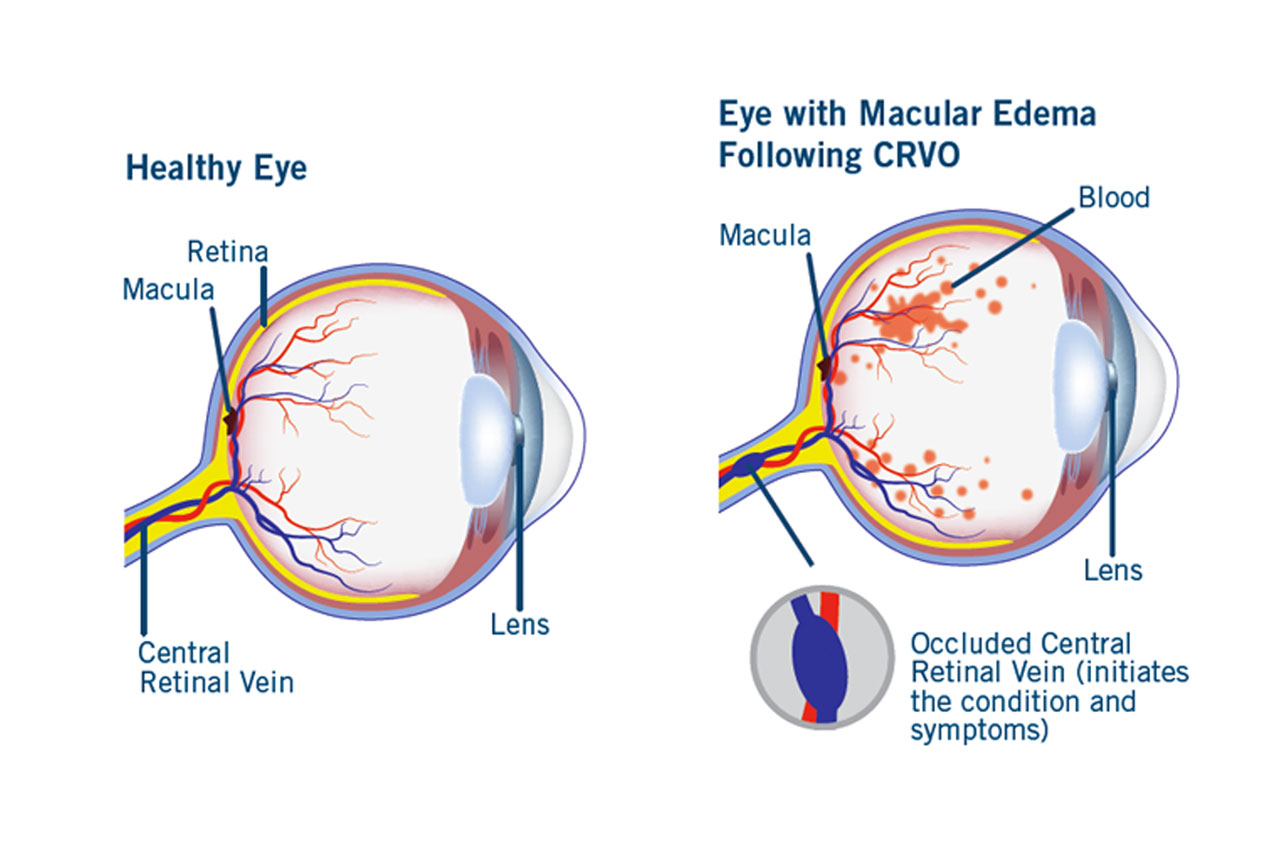What causes a CRVO?
A CRVO is more common in people as they get older, especially over the age of 60. There are some conditions that we know can make it more likely to happen such as:
- High blood pressure
- Diabetes
- High cholesterol
- Smoking
- Glaucoma
- Inflammatory diseases of the eye
Your doctor will order any tests necessary to see if a cause can be found. In some cases a cause may never be found out.

What is CRVO ?
When blood vessels to the retina are blocked it is known as a retinal vein occlusion or ‘eye stroke’, and can cause sudden blindness.
The retina is the part of the eye where light is focused and converted to electrical signals that are sent to the brain. A retinal vein occlusion is a blockage of the blood vessels that feed the retina, and can result in sudden and serious vision problems.
Veins return oxygen-depleted blood back to the heart. The retina has one major artery and one major vein, which is called the central retinal vein. When the vein is blocked it causes fragile abnormal blood vessels to grow and they leak blood and excess fluid into the retina.
What are the signs and the symptoms of CRVO?
CRVO causes sudden, painless vision loss in one eye that can become worse over several hours or days.
There are two types of CRVO:
- Non-ischemic CRVO is a less serious form of CRVO, which accounts for about 75% of cases, and usually has a better visual outcome.
- Ischemic CRVO is a more serious form of CRVO that can lead to the development of significant complication, vision loss and possibly loss of the eye.
How does CRVO damage the eyes?
Fluid collects in the area of the retina responsible for central vision called the macula. The fluid causes swelling or edema of the macula, causing a person’s central vision to become blurry. This condition is called macular edema. Some of the most common signs of macular edema following CRVO are blurred vision, distorted vision, or vision loss in all or part of the eye.
The retina can become starved for oxygen (ischemia), leading to growth of abnormal blood vessels. Some people with ischemic CRVO develop neovascular glaucoma, where abnormal blood vessels cause an increase in eye pressure that can cause pain and severe vision loss. It can take three months or longer for neovascular glaucoma to occur after the development of CRVO.
